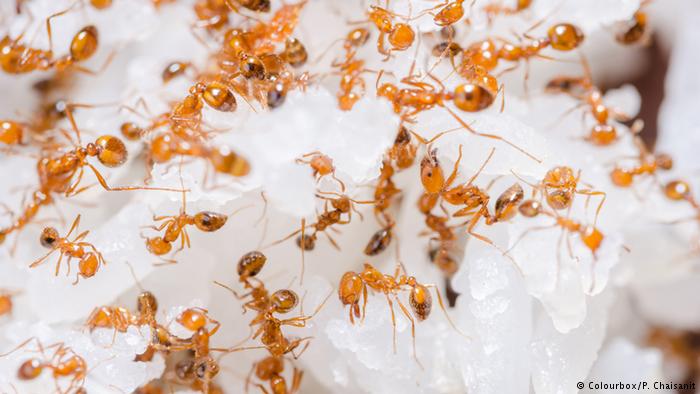Fire Ant Queen found in Osaka, Japan, Triggering Nationwide Harbour Alert

The latest in a rash of stinging fire-ant discoveries in Japan has come from the Port of Osaka, where remains appearing to be a queen and a potential nest were found, prompting warnings and countermeasures at ports across Japan as authorities fear widespread infestations.
Red imported fire-ants, or RIFAs, bite with venom that leaves a burning sting, and in some cases can induce shock and kill their victims. They can wipe out local ant populations and take over their nests. Japan’s Environment Ministry has marked them as an invasive species since 2005. They have cropped up in or near a number of Japanese ports this and last month.
The Ministry called an emergency inspection at the Osaka port […] after tropical fire ants, a related species with similar venom, were discovered there. Around 100 of the insects were collected. After pesticides were sprayed, further inspections […] turned up the remains of about 50 more ants – including winged ones – from cracks in asphalt.
[Recently], the Ministry said it had determined that the ants were RIFAs, and one appeared to be a queen, which had probably been making a nest. As winged ants can fly distances of more than ten kilometer with a favorable wind, the Ministry will comb the harbor’s surroundings to make sure there are no nests.
Another fifteen ports, including those of Hiroshima and Kagoshima, were added to the seven already undergoing emergency inspections. Personnel have been checking for fire ants at ports handling large volumes of imported goods, such as those of Tokyo and Yokohama.
The Ministry of Land, Infrastructure, Transport and Tourism has asked the municipalities governing all of the country’s 933 ports to alert it immediately if they find an RIFA infestation.
Believing the ants may have been mixed in with cargo coming from habitats in China and elsewhere, the ministry also called for 63 ports that regularly run shipments with China, including Tokyo and Yokohama, to administer pesticides in and around their container yards.
The ants’ string of appearances may stem from the fact that they are “exploding in China,” suggests Takahiro Murakami, associate professor of behavioral ecology at Kyushu University.
RIFA queens are thought to be capable of laying 2,000 to 3,000 eggs per day. The ants are difficult to purge completely. When New Zealand suffered an infestation in 2001, it spent more than the equivalent of 100 million yen ($883,500) and two years to successfully eradicate one nest.
Other hosts to the ants, including Australia and China, are likewise spending huge sums on exterminating them. In the U.S., people often suffer fire ant bites during farm work, causing economic losses calculated to reach billions of dollars per year.
Could the ants have already dug in in Japan?
“It’s hard to evaluate at present, but it’s possible for them to hide away and then multiply explosively even a decade later,” said Kouichi Goka, head of ecological risk assessment and control at the National Institute for Environmental Studies’ Center for Environmental Biology and Ecosystem Studies. Green spaces and parks close to ports will need to be watched carefully, Goka said.
[http://asia.nikkei.com/Tech-Science/Science/Fire-ant-queen-found-in-Osaka-triggering-nationwide-harbor- July 5, 2017]

